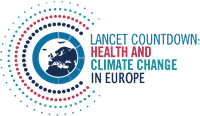All official European Union website addresses are in the europa.eu domain.
See all EU institutions and bodiesDescription

Heat negatively affects human health. Age, pre-existing medical conditions and social deprivation together with working and living conditions co-determine the vulnerability of people and the severity of adverse health outcomes.
Caveats
There is no consistent and universally accepted standard for distinguishing urban from rural areas, in part because of the wide variety of situations across countries. Most countries use an urban classification related to the size or characteristics of settlements. This indicator does not include the existence of heat early warning systems, or prevalence of cooling devices. Neither does it include the prevalence of green areas in cities.
Reference information
Websites:
Source:
Publication:
van Daalen, K. R., et al., 2022, ‘The 2022 Europe report of the Lancet Countdown on health and climate change: towards a climate resilient future’, The Lancet Public Health 7(11), pp. E942-E965. doi: 10.1016/S2468-2667(22)00197-9
Data sources:
- Population data, DALYs and deaths: GBD 2019 - Disease and Injuries Collaborators. Global burden of 369 diseases and injuries in 204 countries and territories, 1990–2019: a systematic analysis for the Global Burden of Disease Study 2019, Lancet 396:1204-1222 (2020)
- Urban population: UNDP. World Urbanization Prospects: The 2018 Revision, United Nations Department of Economic and Social Affairs (2018)
Additional reading:
Li, M., et al., 2015, Heat waves and morbidity: current knowledge and further direction-a comprehensive literature review, International journal of environmental research and public health 12(5), 5256-5283. https://doi.org/10.3390%2Fijerph120505256
Contributor:
Lancet Countdown in EuropePublished in Climate-ADAPT: Jan 19, 2021
Language preference detected
Do you want to see the page translated into ?

